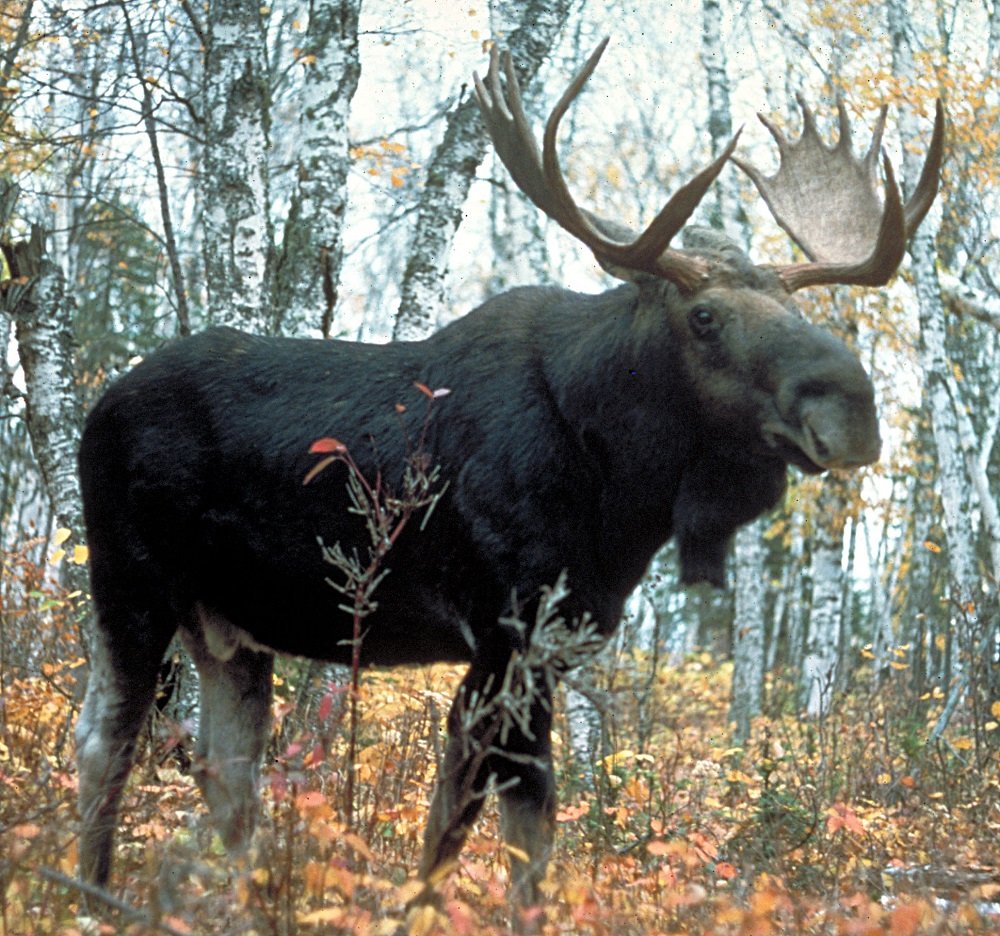Jackson, Wyo. - Global warming might cause moose to freeze to death in Yellowstone National Park.Don't cry. Moose are declining:
The reason for the decline is complicated. Wolves have taken moose, and grizzly bears have been expanding their presence.We all know, before Columbus there was one perfect quota of moose, bear, wolf. The numbers didn't vary from the sacred Gaia Triangle Ratio (whatever it was). There were no cycles. Moose never declined. Then man came, used air conditioners in Florida, caused tick outbreaks in Saskatoon, and da fur fell off doz' mooses. Cold moose!
But climate could be the biggest challenge. Part of the problem is ticks. A moose with too many of the parasites during the winter can lose its hair and freeze to death.
In general, moose are simply better adapted to colder temperatures. When it's too warm, they spend more time in the shade trying to cool down and less time feeding, Courtemanch said.You might have thought fur-free moose might like warmer weather. They just can't win eh?
"The warmer winters and warmer summers are incredibly stressful to them," she said. "They're so heat-stressed all the time. It cascades into poor body condition for females, and that impacts their ability to have a calf. They are so stressed they can't put on enough weight every year."Sounds like da stressed mooses need psychotherapy. If we stopped trying to buy nice weather with solar and wind we could afford a psychotherapist for every mother moose. Stop a windfarm, save a moose!
What are these people on? Moose survived 60,000 years of climate change
Moose struggled through ice-ages and a holocene optimum when the arctic was so warm there was no sea-ice for thousands of years. I did a long 0.89 second search for "evolution of the moose" and the first paper that turns up tells us that moose have been squeezed through population bottlenecks many times and are noted for their ability to adapt to a changing environment.
One day, news outlets may teach writers to use google.
Hundertmark and Bowyer, 2004:
Early studies of genetic variation in moose (Alces alces) indicated little variation. Recent studies have indicated higher levels of variation in nuclear markers; nonetheless, genetic heterogeneity of moose is relatively low compared with other mammals. Similarly, variation in mitochondrial DNA of moose is limited worldwide, indicating low historic effective population size and a common ancestry for moose within the last 60,000 years. That ancestor most likely lived in central Asia. Moose likely exhibit low levels of heterogeneity because of population bottlenecks in the late Pleistocene caused by latitudinal shifts in habitat from recurrent climate reversals.We also see that despite a small starter population and little genetic variation somehow evolution still finds the tools to deal with massive climate changes and environmental shifts.
A northward movement of boreal forest associated with the end of the last ice age facilitated the northward advance of Asian populations and colonization of the New World, which occurred as a single entry by relatively few moose immediately prior to the last flooding of the Bering land bridge. Despite suffering serial population bottlenecks historically, moose have exhibited a notable ability to adapt to a changing environment, indicating that limited neutral genetic variation may not indicate limited adaptive genetic variation. We conclude that morphological variation among moose worldwide occurred within a few thousand years and indicates that moose underwent episodes of rapid and occasionally convergent evolution.
Genetic change in moose populations over very short time scales (tens or hundreds of years) is possible under harvest management regimes and those changes may not be beneficial to moose in the long term. Modeling exercises have demonstrated that harvest strategies can have negative consequences on neutral genetic variation as well as alleles underpinning fitness traits. Biologists should consider such outcomes when evaluating management options.
Hundertmark, KJ, R Bowyer, T (2004) Genetics, evolution, and phylogeography of moose, Alces. vol 40, pp103-122.




These so called experts are becoming dumber by the day. Wonderful what a good 6 or more years of higher education can do isn't it.